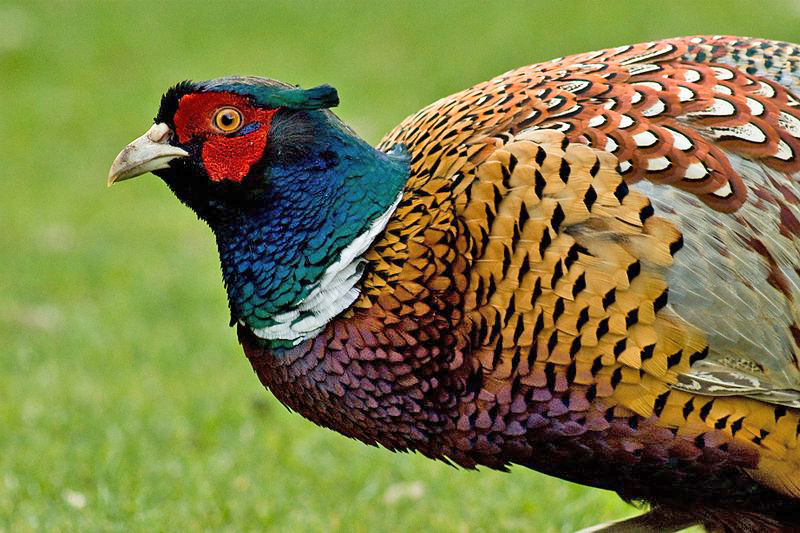Common Pheasant (Phasianus colchicus)
Pheasants are such familiar birds that it is hard to appreciate that, as far as most of Europe is concerned, they are not native here at all, but actually introduced by people. Those introductions were, admittedly, a long time ago – Roman times in Italy, for example – but many populations are still sustained chiefly by shooting interests, and it would be interesting to see how many birds would survive in the long term without being looked after, especially in the west. Some birds in the Black Sea region may well be native, and a small population along a valley in Greece has good credentials, too, but essentially the Common Pheasant’s true centre of population is in Eastern Asia.

By Common_Pheasant_Phasianus_Colchicus.jpg: David Croadderivative work: Donkey shot (talk) – Common_Pheasant_Phasianus_Colchicus.jpg, CC BY 3.0, https://commons.wikimedia.org/w/index.php?curid=11201884
Generally unappreciated by birdwatchers, the Pheasant is actually a spectacular species, especially the male, with its waxy red face, gaudy plumage and long, ladder-marked tail. It is usually seen striding along the edges of fields, but Pheasants also require wooded areas in their territories or home ranges if they are to thrive. They normally roost in trees and bushes, and the females spend much of their time in the undergrowth. The nest, too, is placed on the ground under bushes and shrubs.
Males and females often spend the winter in flocks of a single sex, which may be segregated by slight differences in habitat preference. Males occur in smaller flocks of up to 10 in rather open areas, whereas the females collect in groups of up to 30 in places with plenty of cover. Each flock has its own home range, with informal boundaries.

By Andy Vernon – originally posted to Flickr as Pheasant, CC BY 2.0, https://commons.wikimedia.org/w/index.php?curid=8653034
By February, however, males begin to walk around and look for territories. At first they merely scout, but in March and April they punctuate their rambles with bouts of proclamatory crowing. This is the familiar loud coughing sound so often heard from birds flying away, but made from a prominent perch on the ground to the accompaniment of wing-flaps. Territorial flag-waves such as these may be challenged, and rival males may break into a fight at times, with their combat often prolonged and fierce-looking, but rarely fatal. And after these initial skirmishes, borders are firmly established.
The females select a mate by wandering into its territory and assessing its efforts at courtship. The male has a so-called lateral display, in which it weaves in semi-circles around the female, drooping the wing nearest the female, allowing it to touch the ground, like a courtier putting his cloak down for a lady. If all goes well, copulation follows soon afterwards.

By Isaac Krone – https://www.inaturalist.org/photos/126415670, CC BY 4.0, https://commons.wikimedia.org/w/index.php?curid=104989153
Many male Pheasants acquire only one mate, and may be attentive to the chicks when they hatch. But perhaps more often, males are polygynous, with several females paired to them exclusively in a harem, laying their clutches within the single territory. Few males acquire more than two or three females in all, but as many as 18 have been known in the wild. The males with multiple mates tend not to have anything to do with nests, eggs or chicks.
The clutch size is large, between 7 and 15 and, as in all members of the female, the female incubates her eggs assiduously. She relies on being still and camouflaged for her own protection and that of the brood, and on occasion female Pheasants have been known to sit tight until actually touched on the nest. After three of four weeks the eggs hatch, and within only 12-14 days they are capable of taking flight. They feed on insects at first, but then graduate to the Pheasant’s usual diet of grain, nuts and berries.
From ‘Birds: A Complete Guide to All British and European Species’, by Dominic Couzens. Published by Collins and reproduced with permission.
